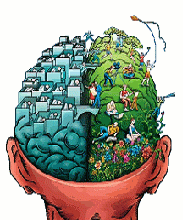A system to develop thinking and learning -TFA script

Self-help
- Amazon.com: Self-Help: Books: Relationships, Personal Transformation, Motivational, Success, Sex, Sp
Online shopping for Books from a great selection of Relationships, Personal Transformation, Motivational, Success, Sex, Spiritual & more at everyday low prices. - Weight Watchers Points
Weight Watchers started a new program called Weight Watchers Turn Around. It includes two programs: Weight Watchers Flex Plan which is based on the Weight Watchers Points system and the Weight Watchers Core... - Ten Quick Ways to Make Money
With finances being tight for a lot of Americans these days, here are ten quick options to raise some cash for extra bills, or even a new startup project. Enjoy. - Acai Juice - The Straight Facts
Acai is everywhere -- celebrities are drinking and eating the berries, doctors recommend it and of course tons of companies are in business to capitalize off the acai berry juice. The acai fruit is mostly... - How I got my hub to be on Google's first page
Before I start, I will say this – I am not selling anything. There will not be an offer to buy my ebook at the end of the hub so you can learn my “secrets of success,” for a fee. Nor will I be selling a... - Every Kind of Ear Piercing
All about the major types of ear piercings including the Daith, Helix, Tragus, Industrial and stretched lobes. Piercing videos, body jewelry and more! - TomTom Vs Garmin
TomTom vs Garmin GPS technology has expanded over the last several years to include mobile devices for cars and motorcycles, software for mobile devices such as mobile phones, PDAs and Pocket PCs. GPS is... - What men should wear to an interview
http://www.eiu.edu/~careers/students/prof_dress.php There are a few rules men should keep in mind when going to a formal job interview: Suit Colors: Navy blue or a darker gray are good. Some dark brown... - 754, 939, AM2, AM2+, AM3: Sorting AMD's Sockets
The constant release of AMD sockets, up to a ridiculous three in nine months, either forced AMD fans to upgrade their motherboards more often than they change their socks or abandon the brand for Intel. Guess which one they did? - How to Uninstall the Mywebsearch Toolbar
Mywebsearch Toolbar is another type of Internet navigational bar that will help guide you around the world wide web. It is a customizable toolbar for Microsoft Internet Explorer. However, as reported by... - How to Volumize Hair - add volume to fine and flat h...
Is your hair flat and lifeless? Do you envy people with bounce and volume? Don't despair, it is possible to put more oomph in your hairstyle!
Your results depends on its effectiveness
Proposing the TFA Script of Human Activity as a tool to develop thinking and learning
By Benjamin S C Ugoji
Introduction
Definitions of terms:
Theories and Concepts -Thinking and Learning
Drivers of behaviour
The TFA Script of Human Activity
The TFA Script of Human Activity - Framework
Benefits of the TFA script
Conclusion
Reference
Appendix
Introduction
In any human endeavour, people want to make progress in other words they want to succeed. However this is not often the case because success requires a series of carefully thought out plans and activities to accomplish. We all want to be successful in our different endeavours but most of the time we miss the mark and therefore fall short of the expectation. Each time we are involved in any activity we expose our senses to loads of information and we try to make sense of this experience. Sometimes we don't set out to make sense of the experience and therefore we don't learn from the experience.
According to Zull (2006), learning means the modification, growth, and pruning of our neurons, connections-called synapses- and neuronal networks, through experience. He proposed that,there are four pillars of learning: gathering, analyzing, creating, and acting. Hence the learning process as a human activity is a thinking process. Learning requires effort on part of learner in form of a self driven motivation and ownership of the learning.
From the forgoing the completion of any learning experience will involve: thinking, feeling and acting on part of the learner; who is expected to move out of his/her comfort zone. The TFA Script is an acronym (meaning Thinking, Feeling and Acting Script) essentially it's a tool which I have developed to monitor these attributes when an individual is involved in any learning experience. It helps to make their thinking visible, reflect on their experience, and make decision on action to take to make progress. By writing their own stories it enable learners to use both part of the hemispheres' of their brain.
This article proposes the TFA Script as a tool to enable learner to make progress in their learning by encouraging them to take ownership of their learning, reflect as well as take action to improve their performance. It will describe the different drivers of behaviour and their implication for learning. The application of the TFA Script as a learning tool as well as it benefits will be discussed.
Theories and Concepts - Thinking and Learning
Any learning endeavour moves you from you status quo; indeed from your comfort zone. It's a new experience and could normally result in changed behaviour depending on how motivated you're. A lot has been written about learning, usually in form of different learning theories. There continues to run a general theme about these theories; namely, in how information is perceived and how it is processed. These activities are: finding relevant facts and organising these facts. Generally speaking these are mind skills through which individuals make sense of their environment or the world around them
Each time we want to make sense of our environment these we adopt these two steps- perception followed by a processing stage. The perception stage is an external experience through which we engage with our sense with a learning artefact and processing stage is done in the brain. The way and manner the information is processed by the brain will determine the way is communicated to us.
Research has shown that there are two modes of perception and two main ways, in which the information obtained, may be processes by the brain, thus creating the possibility of four different styles of thought (Lewis, D 1987 p.55). Swiss psychoanalyst, Carl Jung
observed, that some intellectuals think best when handling abstract concepts, while others prefer dealing with their senses. Then there are intuitive thinkers who rely on hunches than abstract reasoning and others who rely more on emotions than logic.
American psychologist, Dr David Kolb suggested that that there are two way perceive events: through abstraction and through direct experience. On processing the information from the brain, he reckoned that there are two typed of people; those who respond and those who reflect on the processed information.
Interplay of these thinking styles and the perceptive style with their resulting processing style are summarised in the Table 1 below.
Table 1 The perception and processing styles of the four thinking styles
Source: (Lewis, D 1987 p.60)
The thinking style preference for individuals is a matter of default but through experience and understanding in the way the human brain works, it is possible for people to operate in different domains.
Drivers of behaviour
Every human endeavour (event) is driven by our behaviour (in form of what we did or didn't do) results in an outcome (which could be favourable or unfavourable). We have consciously or unconsciously created our present situations through our thought process. What are these drivers of behaviour? For the purpose of this writing I will adopt the term called self system (Marzano, 1998). He described it as an interrelated system of beliefs and processes that produce goals that are executed by the metacognitive system. The self system determines whether an individual will engage or disengage in a given task.
From the forgoing, behaviour is a choice we make and we are responsible for the result for such attitude and behaviour. In his book "How to get where you are to where you want to be" Jack Canfield had this to say:
"You have control over three things in your life- the thoughts you think, the images you visualise, and the actions you take (behaviour). How you use these three things determine everything you experience."(p.12).
The TFA Script of Human Activity
The aim of this tool is to help learner to be intentional in their thinking and hence their behaviour in any learning experience or cognitive situation. People should have a clear understanding of the purpose and therefore the expectation they want before or after the experience. It could be use as a pre or post evaluative tool with framed questions to challenge your thinking and action which in turn will impact the outcome of the experience. The TFA Script seeks to adopt the whole brain strategy so as to encourage learners to stimulate both thinking style preferences of the brain.
The TFA Script of Human Activity - Framework
Purpose of Activity: Date:
A. Thinking
1. Why am I going through this experience?
Here you try to explain why this experience is important to you. Try and put a human face to this exercise. Possibly explore the physical, spiritual, economic, ethical and social dimension value of this experiment. This could in fact be a driving force to the attention you pay to it, hence your motivation. The why question is very profound since it is the reason for your engaging in the exercise. It says a lot about the value you attach to the endeavour.
2. What assumptions did you bring to this experience?
3. What opportunities or challenges does this experience present to you?
In answering this question be as imaginative and possibly use evocative words to share your experience.
4. Were you able to accomplish them?
5. If Yes, How and if No, Why not?
6. How can I take this experience forward?
7. How committed were you in accomplishing the tasks?
8. How will you evaluate the experience?
In this regard you have to base it on what worked well, what didn't work well and what was interesting about the experience?
B. Feeling
9. Describe your feeling and mood during this exercise?
8. Did your feeling affect your behaviour (what you did or didn't do) during this activity? If yes, How?
10. What can you do to adapt your behaviour so as to perform better?
C. Action
Here you need to take critical action to change your present situation. You need to consider the actions you need to take to change your present circumstance or to bring into reality future expectation or outcome. You need to carefully consider the risks these change could bring and how to harness and manage it. For example it could require your changing the way you think and hence do things so as to leverage your thinking and possibly improve the outcome of your experience.
11. Are there future objectives you want to accomplish as to make sense of the opportunity?
12. What strategies, tactics and logistics will you adopt?
13. When, Where and by who?
14. How will you measure the outcome?
15. Review and learn from the experience and use the feedback to gain understanding.
Benefits of the TFA Scripts
Every learning experience will normally expect the learner to move out of his/her comfort zone. This is a great challenge to every learner, who is faced with a lot of considerations, fears and obstacles that could impinge on their making progress. The main aim of the TFA Script is that through the series of questions, learners through answering them would make their thinking intentional as well as visible. By making these overarching demands on the learner thinking it helps them to see the shadow side of their options or decision which will help them form their opinions thus shaping their thinking.
Ultimately, the TFA Script enables learners not to think but also to take action so as to implement the ideas, thoughts or decision arising from their thinking experience. Hence it helps you to think, learn and act.
It can also be use as a tool for problem solving and opportunity development through making our thinking visible we could begin to see the blind spots due to the way perceive things and then set strategies to challenge them.
Conclusions
This article has described TFA Script as a framework to enable learners become more intentional in their thinking based on the learning experience. It challenges the assumptions, beliefs and values that the learner brings to the learning experience and enables them to critically consider the options that need to be pursued to enrich their learning. It helps them become more aware of the challenges posed by the learning experience due to new knowledge gained from the experience which in turn enable them to act.
©2008 Ben Ugoji









